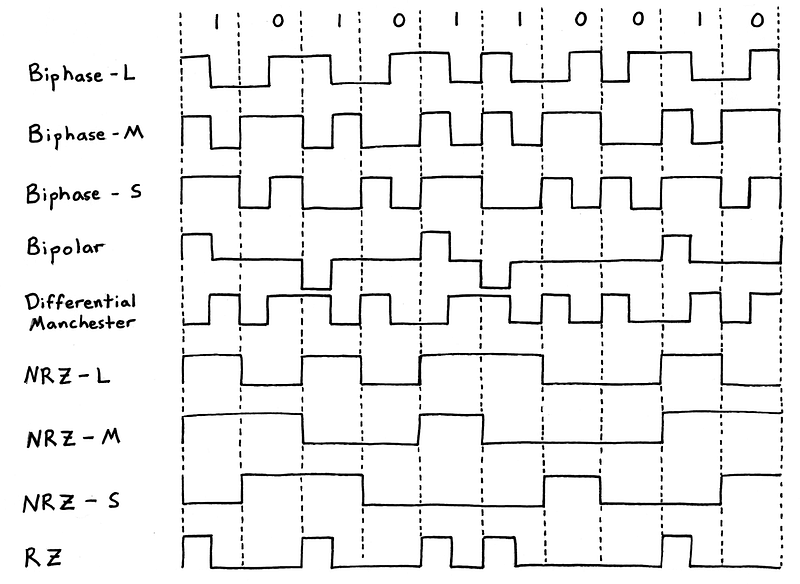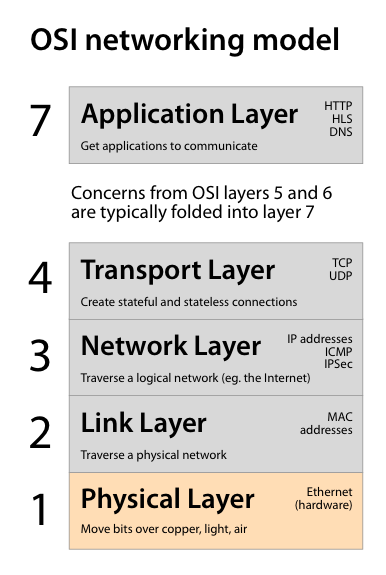Essential Insights for Developers on Networking Fundamentals
Written on
Understanding the Basics of Networking
What allows bits to traverse through various mediums? The extensive IEEE specification for Ethernet encompasses over 4,000 pages of intricate details, including technical specifications for coaxial connectors and compliance standards. However, the aim here is to distill this information down to the critical aspects that anyone engaged in networked applications should grasp. A simplified mental model of networking can enhance your comfort level with underlying processes.
My passion for computer networking stems from its myriad real-world trade-offs, established designs, and inventive solutions that have evolved over time. It combines elements from computer science, electrical engineering, telecommunications, information theory, and physics, creating a fascinating tapestry that enables instant communication across the globe. The invisible flow of data feels almost magical, akin to Harry Potter's enchantments. Thanks to rigorous standardization, devices can seamlessly connect from anywhere, whether it be a café in San Francisco or a village in Tanzania. Unfortunately, many users only notice their network when issues arise, such as slow speeds or cryptic error messages like ERR_NAME_NOT_RESOLVED.
The Networking Stack Explained
The networking stack is a conceptual framework that helps us comprehend how networks function. This layered model divides responsibilities and concerns into distinct levels, though in practice, responsibilities often overlap. When asked about the number of layers in the networking stack, responses may vary from 3 to 7, primarily due to different theoretical frameworks. The OSI (Open Systems Interconnection) model features 7 layers, while the Internet model condenses this into 4 layers. For the sake of clarity, I’ll adhere to the OSI model terminology.
At the base, we have the physical layer (Layer 1), comprising bits, cables, and radio signals, while the top layer is concerned with application protocols like HTTP (Layer 7). The middle layers facilitate essential functions such as stateful connections, IP addressing, congestion management, routing, and security.
When a web page request is made, it cascades down through the layers from the browser before traversing the network. Various devices, mainly routers and switches operating on Layers 1 to 3, will process and modify the request as it moves. Upon receiving a response, the data ascends through the stack back to the web browser.
Let's first discuss the Physical Layer (Layer 1), which is the foundation of the network. It ensures that bits are transmitted smoothly and safely through various mediums—whether they be electrical signals, light, or radio waves. This layer encompasses fiber optic cables, CAT-6 twisted-pair cables, and the invisible Wi-Fi signals that we often take for granted.
While higher layers focus on the information being transmitted, at the Physical Layer, data is simply bits. Whether it's Beyoncé or Mozart, HTML or PNG, or TCP or UDP, the crucial task is to reliably send bits between devices. This layer's responsibilities include signal modulation, error detection and correction, and synchronization—each tied closely to the transmission medium.

Challenges with Noise Reduction
The primary adversary at the physical layer is noise, which can significantly hinder signal quality. Wi-Fi, for example, is notorious for being a noisy medium, favoring convenience over reliability. Even minor disruptions, like using a microwave, can affect Wi-Fi stability. In contrast, optical fiber experiences minimal noise and delivers a clearer signal.
Another middle-ground option is 1000BASE-T (Gigabit Ethernet), which faces its own share of electromagnetic interference. The concept of twisting wires together, pioneered by Alexander Graham Bell, helps mitigate interference and strengthens the signal over longer distances. Today's Ethernet cables utilize twisted pairs of copper wires, each with distinct twist rates to minimize cross-talk.

The design of cables and connectors is vital for reducing noise. Gigabit Ethernet adapters are equipped with digital signal processors (DSPs) that employ adaptive filtering to cancel out noise. This technology not only filters out interference but also introduces noise through signal scrambling, which aids in compliance with power and interference regulations.
Digital Modulation Techniques
How do we convert our binary data into a format suitable for transmission over a copper Ethernet cable? With Gigabit Ethernet, this process is more complex than it used to be. Let's take a step back to the 1990s, when Ethernet typically ran at 10MBits/s.
In a 10BASE-T Ethernet link, two pairs of wires were used—one for sending and another for receiving. The transmission relied on differential voltages to represent binary symbols. This method continues to be utilized today, albeit with more advanced techniques for higher speeds.

Channel Coding for Error Correction
To ensure accurate data transmission, we need effective channel coding schemes. A simple approach might involve adding a parity bit to each set of bits, but this requires retransmission if errors are detected. Instead, error-correcting codes (ECCs) add redundancy to ensure data integrity without necessitating retransmission, thereby improving efficiency.
For instance, a classic error-correcting method, Hamming(7,4), encodes four input bits into a seven-bit output, enhancing clarity and minimizing error rates. This technique stands in contrast to older methods, providing a more efficient transfer rate while maintaining data integrity.
Maximizing Bandwidth and Performance
The objective is to transmit data swiftly and economically. Over the years, bandwidth improvements have occurred even with relatively unchanged mediums. Enhanced coding techniques and manufacturing capabilities have led to significant increases in data transfer rates.
Current Gigabit Ethernet operates at a symbol rate of 125 million symbols per second. Through clever modulation and synchronization techniques, data can be efficiently transmitted in both directions simultaneously. Understanding these mechanisms is crucial for anyone involved in networked applications.
The first video, "A Deep Dive Into Computer Networking for Web Development," provides a comprehensive overview of networking fundamentals that are essential for developers.
The second video, "Networking 101 for Software Engineers – Gabriel Rosenhouse," offers foundational insights into networking principles specifically tailored for software engineers.
As we transition to the Link Layer (Layer 2), we will explore how local networks are established and how the meaning of data begins to emerge from the fundamental bits.